The celebrated Mr. K pays a birthday tribute to the human comics encyclopedia…
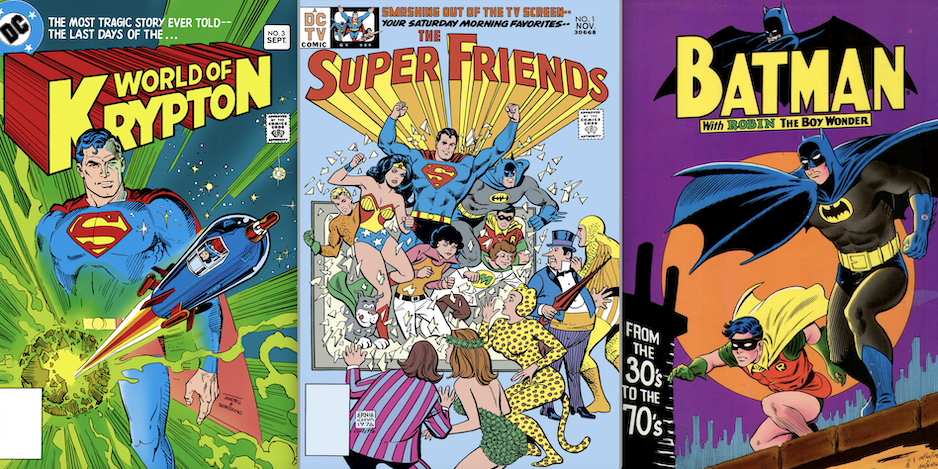
—
UPDATED 9/22/24: The late, great E. Nelson Bridwell was born 93 years ago! Perfect time to reprint this piece, which first ran on his birthday in 2021! Dig it. — Dan
—
By PAUL KUPPERBERG
Nelson Bridwell (Sept. 22, 1931 – Jan. 23, 1987) is a name that should be familiar to every fan of DC Comics’ Silver and Bronze Ages. Starting at DC in 1965 as assistant to Superman editor Mort Weisinger, Nelson would spend the next 30 years helping shape the adventures of the Superman family of characters as both an editor and a writer. Nelson had an encyclopedic mind and was an expert on not only DC’s history and continuity, but the Bible and the works of Shakespeare as well, but we knew him mainly as the company’s Chief Continuity Cop.
Nelson was one of the first professionals I ever met, in 1971 when Paul Levitz and I went up to DC to gather news for our fanzine Etcetera (which would become The Comic Reader). Later, he would serve as my collaborator or editor on two of my early high-profile assignments (more on them below), but he was always on call to answer those tough Kryptonian trivia questions, such as, “Hey, Nelson, where was the habitat of the Thought-Beast?” and, “What was the name of Jor-El’s nasty cousin when he was a boy?” (The Scarlet Jungle and Cru-El. For real.)
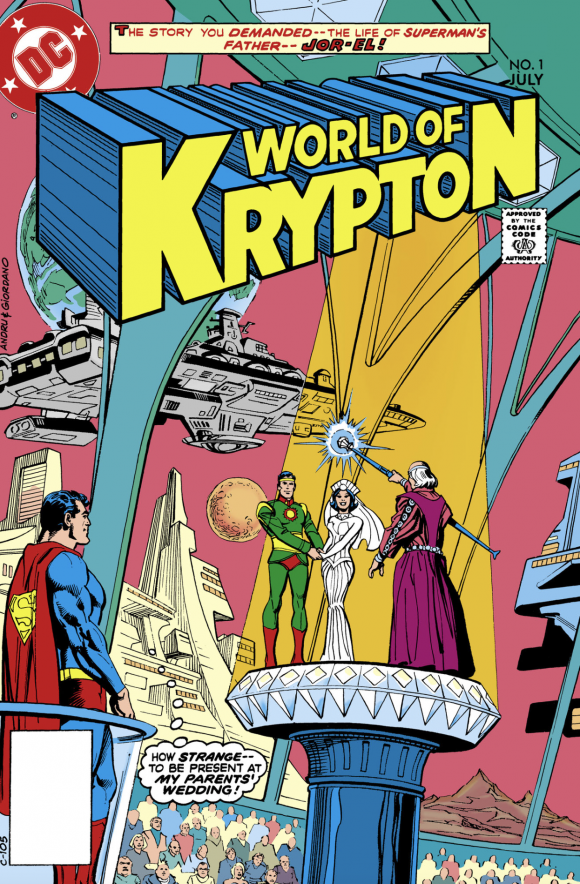
Coincidentally, I posted about Nelson recently on my website in a short piece (from which I cribbed some of this intro) accompanying a 1981 interview with Nelson from the fanzine Comics Feature, so please do check that out for more of his story in his own words.
Which leaves me nothing left to say except I hope you’ll join me in remembering Nelson, who was born 90 years ago, and enjoy these, MY 13 FAVORITE E. NELSON BRIDWELL PROJECTS, in chronological order:
—
Mad Magazine #38 (March 1958). The funny thing about Nelson was that upon meeting him, “funny” wasn’t your first impression. He was a roundish man with a crewcut and horn-rimmed glasses in a black suit, with a shy demeanor and friendly smile, so you had to really listen to realize how funny he actually was. Or have read his body of work, especially from the 1960s, in which for three years running he created a new humor title… or dive back into the 1950s, when the young man from Sapulpa, Oklahoma, made his first sale to Mad Magazine.
Not only did he make the sale, but his two-page article, “TV Scenes We’d Like to See,” illustrated by then-Mad stalwart Joe Orlando, featured a punchline starring Tonto and the Lone Ranger that has gone on to become a classic.
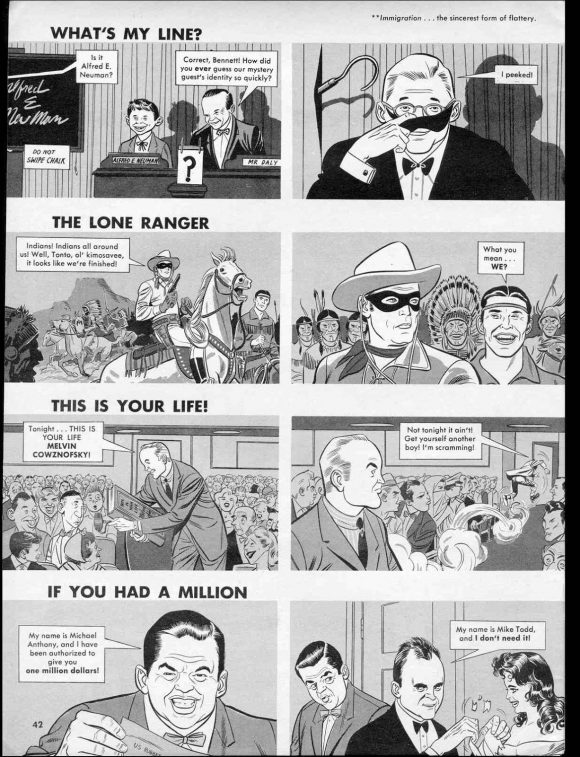
—
The Inferior Five (1966). Nelson was one of the first fans to be hired by the Big Two in the 1960s; he might have been only the second, after Roy Thomas, who was hired in 1965 to be Mort Weisinger’s assistant at DC — but quit after only a couple of weeks of the senior editor’s abusive supervision to work for Stan Lee at Marvel. As Nelson also started in 1965, I assume that he had been hired to replace the hastily departed Roy.
And Nelson’s was a case of being in the right place at the right time, hired by DC at the beginning of a period of experimentation by the publisher. While superheroes were the main focus, the company still had a full complement of genre titles, from romance and war to science fiction, adventure, teen, funny animals, and celebrity comics. In those years, the tryout title Showcase was liable to feature anything from Enemy Ace and B’wana Beast to Binky and Windy and Willy.
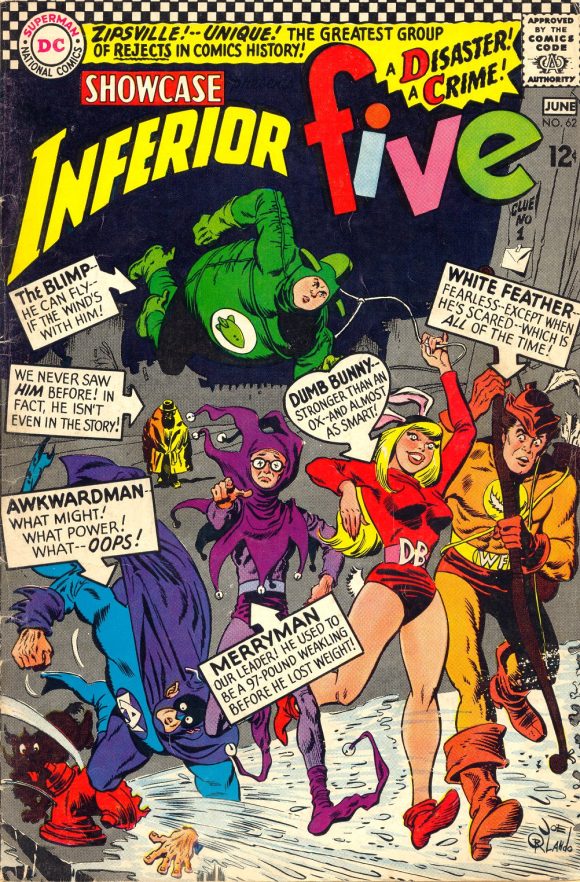
Or the Inferior Five, created by Nelson and artist Joe Orlando, which made its first of three appearances in Showcase #62 (May/June 1966) before being awarded its own title (with art by Mike Sekowsky and, later, Win Mortimer), which ran for 10 issues (March/April 1967 – Sept./Oct. 1968). I-5 was satire from top to bottom, the story of a group of incompetent second-generation superheroes trying desperately but in vain not to disappoint their heroic forebearers. Nelson wasn’t shy about butting heads with the competition either; in Showcase #63, the I-5 take on a satirized version of Marvel’s Avengers, a full year before Marvel could retaliate in the pages of their satire title, Not Brand Echh.
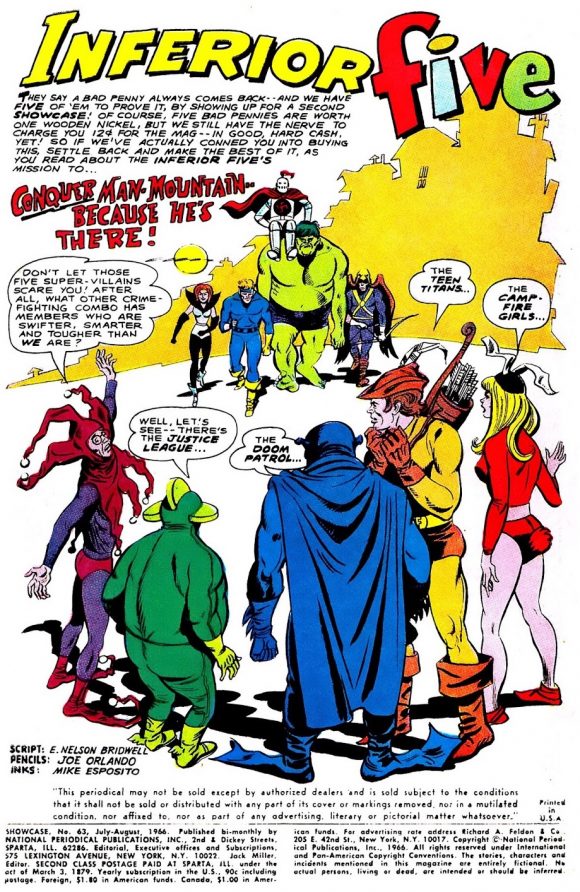
—
The Maniaks (1967). It must have been “A Hard Day’s Night” (1964) when Nelson created the Maniaks (1967) with the “Help!” (1965) of artist Mike Sekowsky… and they didn’t “Monkees” (1966) around.
What I’m saying is, manic rock group romps were in the gestalt of the mid-1960s and hot on the heels of the Beatles’ two wildly successful films and the debut of the short-lived but influential TV show starring the Monkees, Nelson conceived of such a band for DC Comics: the Maniaks, debuting in Showcase #68 (May/June 1967) … and ending, sadly, after a third Showcase appearance in #71 (Nov./Dec. 1967).
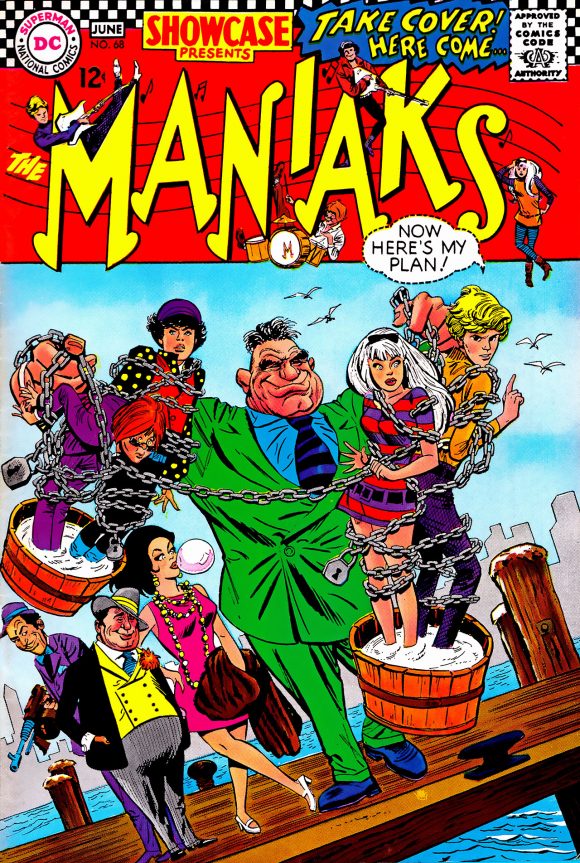
Nelson put a lot into the Maniaks, including writing lyrics for numerous songs in each issue. The final issue is the most ambitious and features perhaps the strangest comic book real-life guest star: comedian and director Woody Allen, as himself, hiring the Maniaks to star in his next Broadway musical after “Don’t Drink the Water,” “Confederate Yankees,” co-starring the barely disguised British model “Twiggly”!
—
The Secret Six (1968). I was obsessed with Secret Six when it first came out. It was like nothing else that was being published at the time, the story of six individuals, each possessing some special talent or skill that they are forced to employ in the service of the mysterious Mockingbird or risk having their darkest secrets revealed. It was a little bit Mission: Impossible, a dab of Man From U.N.C.L.E., but with a great twist: Mockingbird was actually one of the six but neither the other five nor the reader knew the secret!
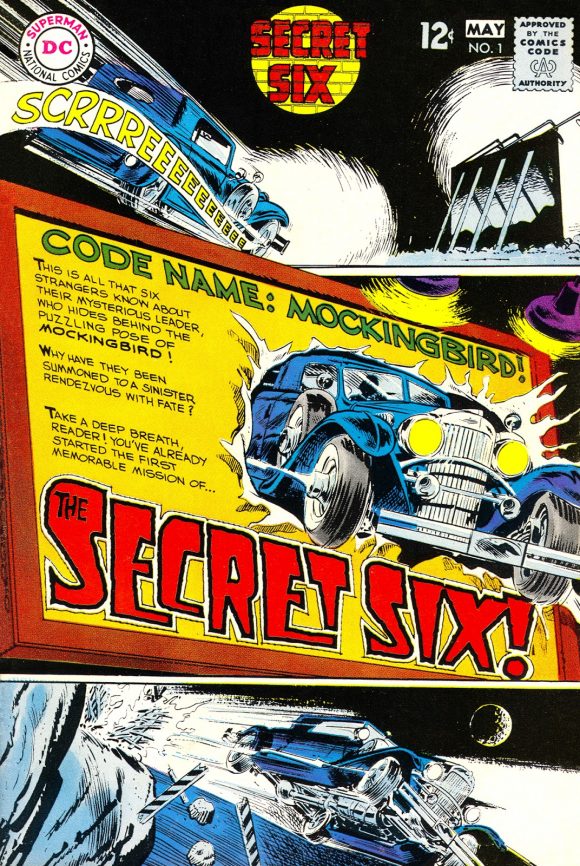
The Secret Six, with art by Frank Springer and later Jack Sparling, only lasted seven issues (April/May 1968 – April/May 1969) and the secret of Mockingbird’s identity was never revealed. Years later when I was working with him, I asked Nelson to please, please finally let me in on the secret. But Nelson wouldn’t say. “One day,” he promised vaguely with a mysterious smile.
P.S. In even later years, a revival of the Secret Six by Martin Pasko and Dan Spiegel in Action Comics Weekly revealed Mockingbird’s identity, but as much as I loved Marty and his writing, I wasn’t going to believe it unless it came from Nelson.
Bonus thing to love: The Secret Six #1 cover is also page one of the story; when you open the book, the action continues on the first interior page!
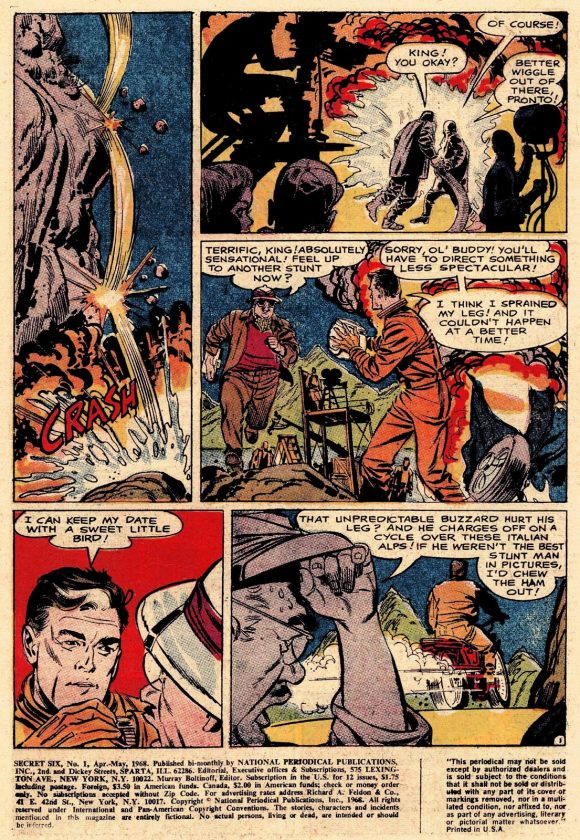
—
Angel and the Ape (1967). Remember what I said about it being a period of experimentation? Imagine this pitch meeting: “It’s about a cartoonist gorilla in a suit who moonlights as a detective with his none-too-bright but beautiful artist model, and only she can understand and translate his ape-ish grunting!”
Yeah, I can’t either, but editor Joe Orlando could. (I’d later be in pitch and plotting sessions with Joe. Turns out he was usually the one that had to be reined back from going too far or too wacky.)
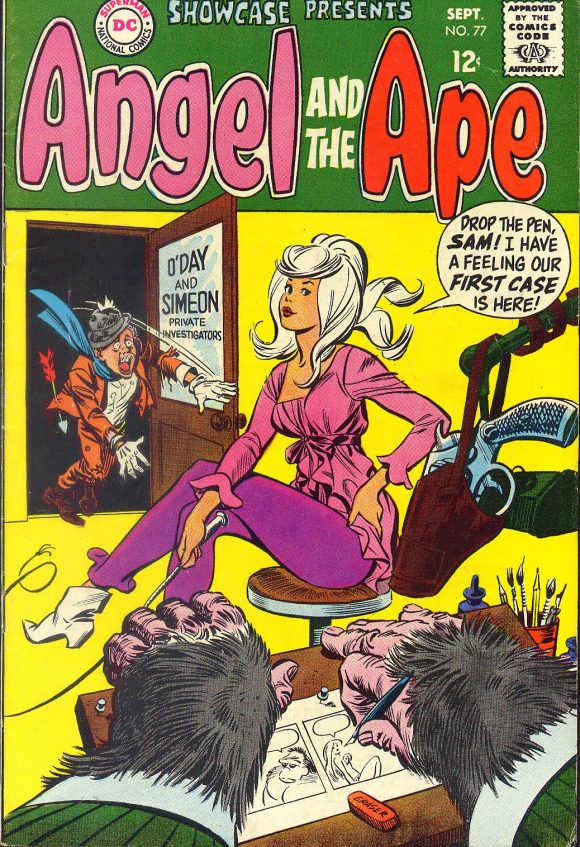
After their try-out in Showcase #77 (Sept. 1968) Angel and the Ape won their own title, which ran for six issues (Nov./Dec. 1968 – Sept./Oct. 1969). John Albano and writers unknown took over the scripts, which suffered from the lack of their creator’s wit, but the art remained stellar throughout, with pencils by Bob Oksner and inks on several issues by Wally Wood. Hubba hubba!
—
Superman From the ’30s to the ’70s (Bonanza Books, 1971). Before there was the internet, there were… books! This is one of the earliest and still best collections of classic Superman stories ever assembled, featuring tales in color and black-and-white from the Man of Steel’s first few decades, with an introduction by Nelson.
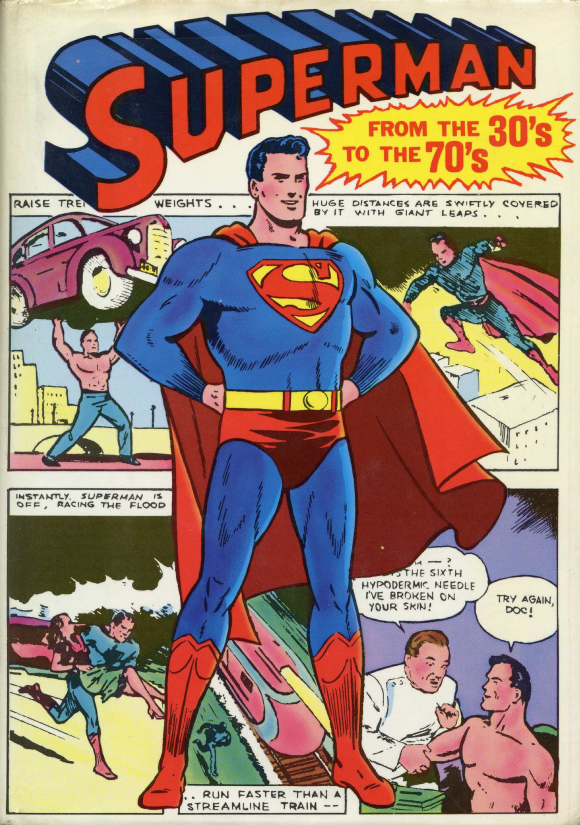
—
Batman From the ’30s to the ’70s (Bonanza Books, 1971). See what I wrote above, substituting “Batman” and “Caped Crusader” for “Superman” and “Man of Steel.”
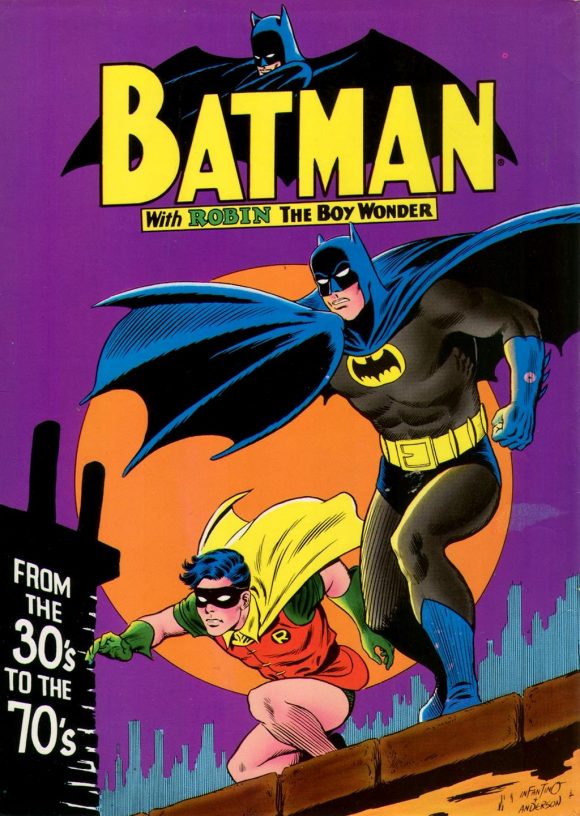
—
The Batman Syndicated Newspaper Strip (The Ledger Syndicate, 1971). A beautiful example of Al Plastino’s stellar work on the syndicated Batman newspaper strip (July 8, 1971), many continuities of which were scripted by Nelson. I was a faithful follower of Batman through the late-1960s and 1970s as it ran in the New York Post, back then the liberal paper read in my household and the newspaper I delivered to homes in East Flatbush on my bicycle.

—
Super Friends (1976). Many consider E. Nelson Bridwell’s Super Friends series one of the best adaptations of a superhero animated series ever (running 47 issues, from November 1976 to August 1981). As much as I wanted to enjoy the cartoon series, by the time the animated Super Friends was airing on Saturday morning TV (1972 – 1985), I was 18 and found them too simplistic by even Silver Age comic book story standards to sit through. Especially the Wonder Twins and Gleek. Ghak!
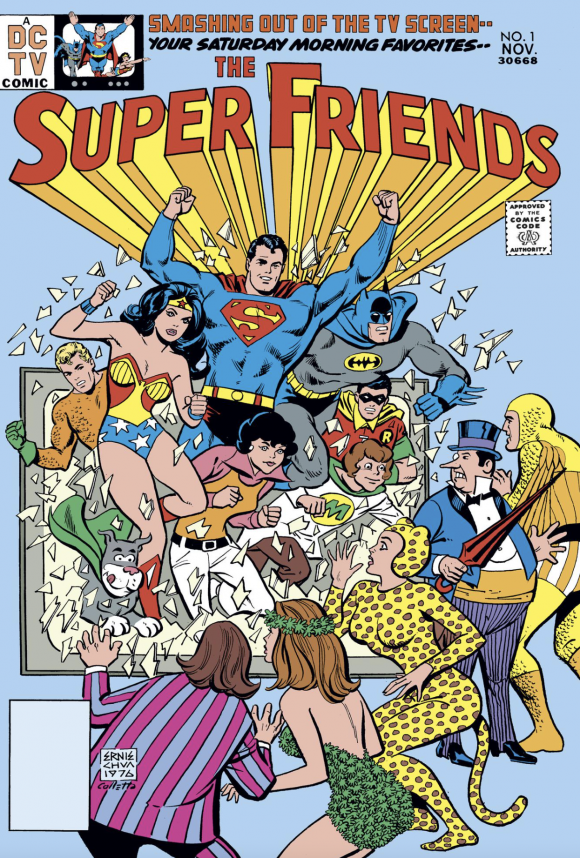
Of course, Nelson took only the structure and setting of the animated series and used them to write some pretty swell superhero stories, employing a whole range of obscure classic characters, as well as creating many new ones, including the team of international heroes known as the Global Guardians. Despite having been introduced in the non-canonical Super Friends title, the Guardians eventually made it into the DCU. I had a shot at writing a much-altered version of the group in Justice League Quarterly #17 (Winter 1994).
—
Shazam! From the ’40s to the ’70s (Harmony Books, 1977). See Superman From the ’30s to the ’70s and Batman From the ’30s to the ’70s and insert “Captain Marvel” and “the Big Red Cheese.”
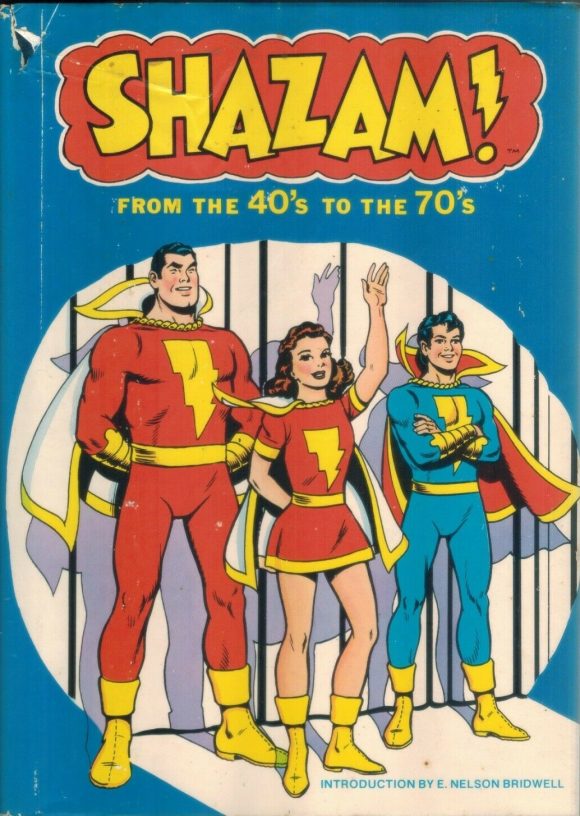
—
The World of Krypton Miniseries (1979). While I had plotted the odd 10-pager for Superman Family with Nelson as my editor here and there, World of Krypton was my first full immersion into the “Nelson Zone.” The three-issue story (July – Aug. 1979) had originally been created to run in the revived Showcase title, originally #104 – 106, then pushed back to #110 – 112… and then left in limbo when Showcase was cancelled with #104.
Superman: The Movie was released in December 1978. As you may know, DC wasn’t able to do any direct adaptations of the film due to contractual issues with original screenwriter Mario Puzo, so World of Krypton was pulled from the drawer and published, becoming comics’ first deliberate (i.e., not cancelled after only a few issues) miniseries, featuring layouts by my brother Alan, pencils by Howard V. Chaykin, and inks by Murphy Anderson.
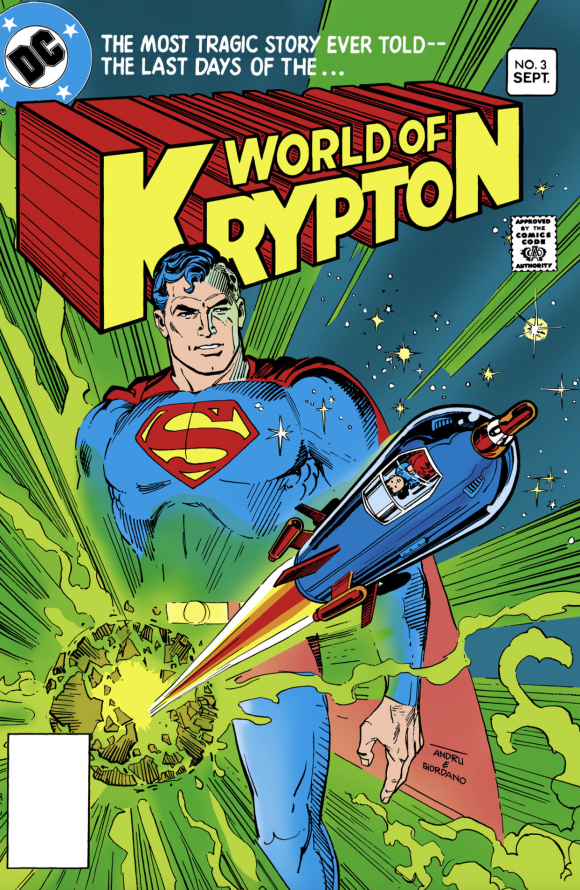
To write it, editor Nelson Bridwell handed me several typewritten sheets of paper and a stack of reference material culled from the previous 50 years of stories set on or about Krypton. The typed pages contained a chronology of every major event (and many minor) in the history of Krypton and Jor-El’s lifetime.
Every. Single. One.
“Bu- but, Nelson,” I stammered, “there’s no way I can fit this all into three issues!”
With his usual calm smile, he said, “Well, do the best you can.”
—
Shazam!/Captain Marvel. I’m not sure exactly when Nelson started writing the adventures of Shazam!, or what we were legally obligated to refer to as “the original Captain Marvel,” but if there was ever a title he was born to script, it would be that. Throughout issues of Shazam!, Adventure Comics and World’s Finest, Nelson’s tales captured the wit and charm of the Bill Parker/C.C. Beck original stories and made great use of the Big Red Cheese’s extensive and colorful cast. For much of that run, Nelson was teamed with an artist who was also born to work on Captain Marvel, the late Don Newton. This is from World’s Finest #265 (July 1980).
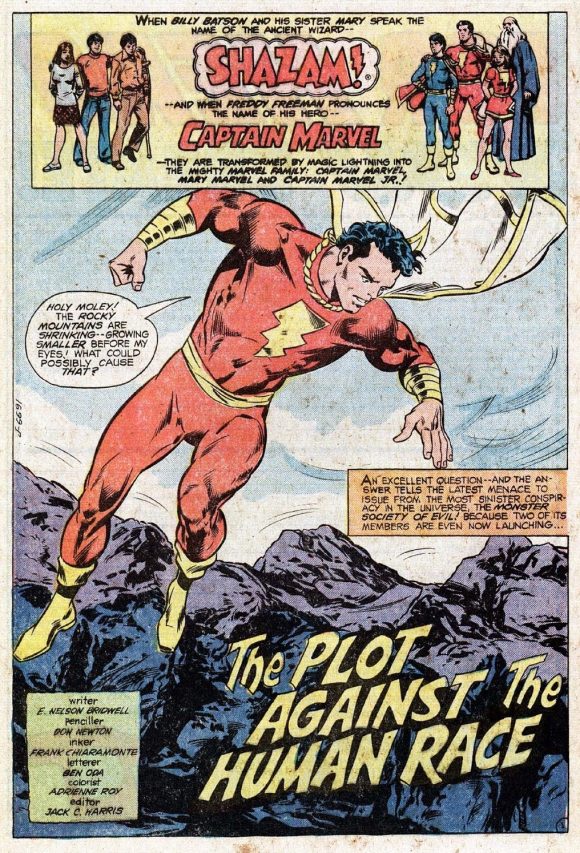
—
Secrets of the Legion of Super-Heroes (1981). So for this one, not only was I handed several typewritten sheets of paper and a stack of reference material culled from the previous 23 years of Legion stories by Nelson, now my co-plotter, but the three-issue miniseries (Jan. – March 1981) was being edited by Joe Orlando. Joe never met a good idea he didn’t, in his enthusiasm, want to try to shoehorn into a story; my experience with him as editor on 1986’s Super Powers miniseries followed exactly the same route. I loved every second of it!
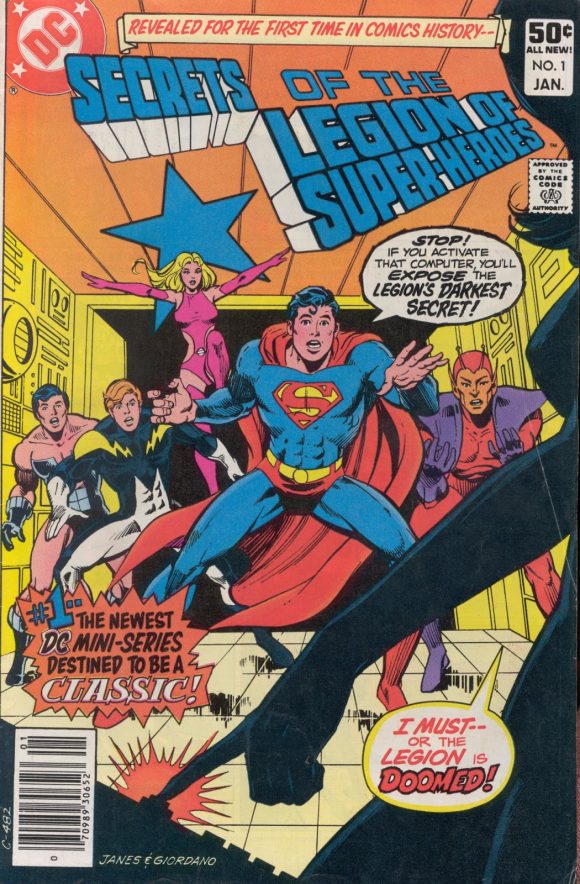
Having written a good chunk of their earlier history, Nelson knew his LSH beans, and the chronology was thorough, covering what felt like the histories of several thousand characters (okay, maybe like 16 or so, but still…!), plus, of course, a story — thin as it was — to hang it all from. (For the record, it was Nelson who came up with the story’s big reveal about RJ Brande.)
“Bu- but, Joe,” I stammered, “there’s no way I can fit this all into three issues!”
With an evil glint in his eye and a giggle, Joe said, “Well, do the best you can.”
Nelson nodded in earnest agreement. “Talk to me if you have to drop something, so we don’t accidentally leave out anything important.”
To his credit, it was all important to E. Nelson Bridwell.
—
MORE
— PAUL KUPPERBERG: My 13 Favorite Collaborations With CARMINE INFANTINO. Click here.
— THE ATLAS OF THE DC UNIVERSE: Paul Kupperberg Reveals 13 FASCINATING FACTS. Click here.
—
Paul Kupperberg has been writing comic books from Archie to Zatanna for 45 years at DC, Archie, Charlton, Marvel, Bongo and others. He is also the author of Paul Kupperberg’s Illustrated Guide to Writing Comics (Charlton Neo Press); I Never Write for the Money… But I Always Turn in the Manuscript for a Check (Comics Career); the comic book industry-based murder mystery The Same Old Story, the short-story collection In My Shorts: Hitler’s Bellhop and Other Stories, JSA: Ragnarok, and his latest, the YA fantasy/time travel adventure Emma’s Landing, all from Crazy 8 Press and all available on Amazon, or signed and personalized direct from Paul (email him at pkupps55@yahoo.com for details).

September 22, 2021
I got Superman 30s-70s when it first came out, and I pored over every page until my eyes bled!
September 22, 2021
I would put Bridwell’s curation of the DC 100 Page Super-Spectaculars at the top of the list, those comics were instrumental in me becoming a lifelong fan of the history of the medium and the DC Universe (but the Superman and Batman Bonanza books are up there, too!).
September 22, 2021
That would make my list, too!
September 22, 2021
Great choices, Paul. Not to undercut you, but for the historical record, Nelson himself said in a lettercol that book editor Linda Sunshine actually curated the stories for the Superman and Batman volumes and that he had no say in their contents. (But the Shazam! one was all his!)
September 22, 2021
No worries! Thanks for the correction; I’m having Dan make the change!
September 22, 2021
Fixed, folks!
September 22, 2021
Happy birthday to the late Mr. Bridwell.
September 22, 2021
A great way to celebrate ENB on his birthday!
As I understand it, while some fans don’t consider The Super Friends as part of Earth-1 continuity at that time, there are some fans that do, and I had read that ENB considered it within Earth-1 continuity. There were things that happened in other comics that were reference in Super Friends, and things that happened in Super Friends that were referenced in other books.
September 22, 2021
A real shame Bridwell & Newton’s Shazam stories have never been published in a collected edition.
September 23, 2021
But they have been! https://13thdimension.com/don-newtons-shazam-to-finally-get-collected/
September 24, 2021
ENB was one of the first comics people I “knew” thanks to the Super Spectacular text pages and thr Superman and Batman books. He educated and entertained me with his writing and editing, and I regret I never got the chance to thank him. This was a great overview/appreciation. Thanks, Paul!
September 29, 2021
The SHAZAM World’s Finest Comic Stories are my favorite of the character.
Sharp writing by Bridwell and beautiful art by Newton.
April 26, 2023
I love E. Nelson Bridwell’s work.
His Super Friends was better than it had any right to be – certainly better than the cartoon it was based on. Also, I love the way he treated it as earth-1 canon. I consider it canon myself.
His Shazam work was great, and his collaboration with Don Newton on those Shazam World’s Finest stories are among my favorite DC 70’s stories!
World of Krypton and Secret Six were also very cool projects, and I agree that his curation of the DC 100 Page Super-Spectaculars should be at (well, near) the top of the list.
The only thing I don’t love is, well, I’m a HUGE Legion fan, and I really disliked the reveal that RJ Brande was Chameleon Boy’s father. Did not work for me in any way, shape or form, unfortunately
September 22, 2024
Bridwell may have been the first comic book creative folk I knew about (Before I was paying attention to the credits!) thanks to a few self-referential gags in “Inferior Five” which I read in reprints and back-issues (thank you used bookstores!) in the early 70s. All the creative stuff I soaked up through the comics may have pushed me into being a writer! Happily, by the way! Oh, and I hope somebody puts out a (very thin) omnibus of “The Maniaks.” I saw the ads in the back-issues but never saw one of their stories!
September 22, 2024
I love a lot of Bridwell’s work. His introductions in the Superman and Batman collections taught me, about 11 years old when I first read them, all about the characters’ backgrounds. I also enjoyed the Super Friends comic and Shazam! stories in World’s Finest. Thanks for pointing out they have been collected, Dan. I did not know that either.
September 23, 2024
I find it ironic that you refer to the Super Friends comic as “non-canonical” when Bridwell worked so hard to make sure that it was in continuity! I think he did so in such a clever way that you could take it or leave it. However, there are at least 5-6 clear references to the Super Friends stories in other DC titles.
September 23, 2025
Small correction; Superman’s evil relative’s name was spelled Kru-El, not Cru-El.